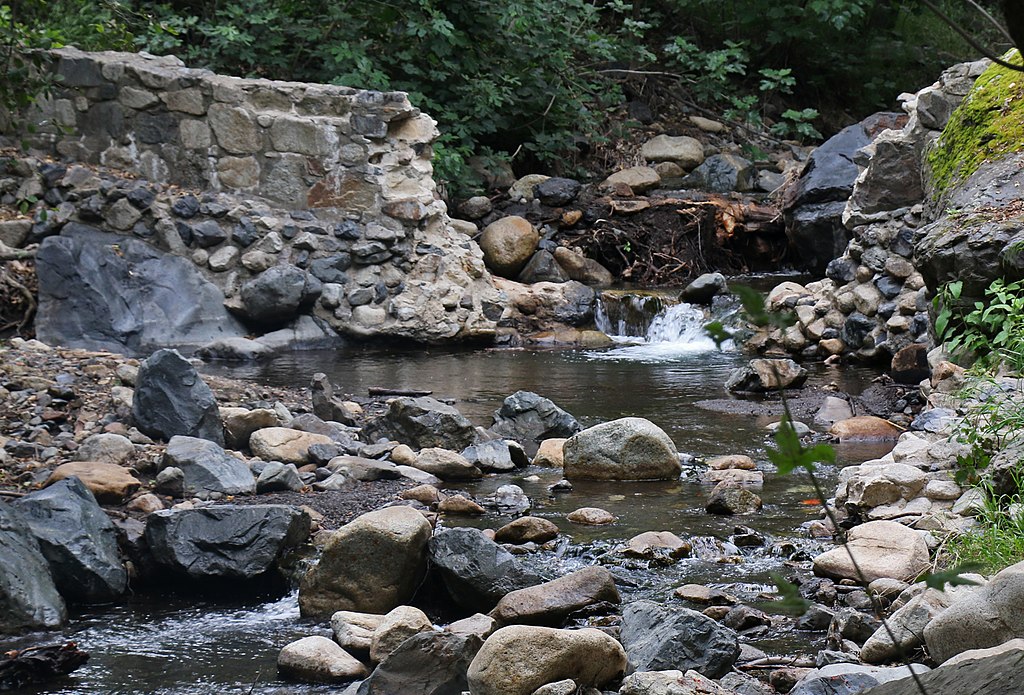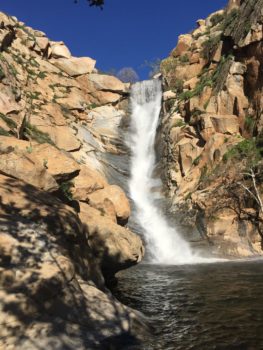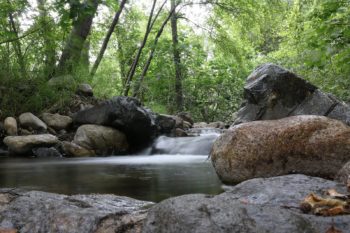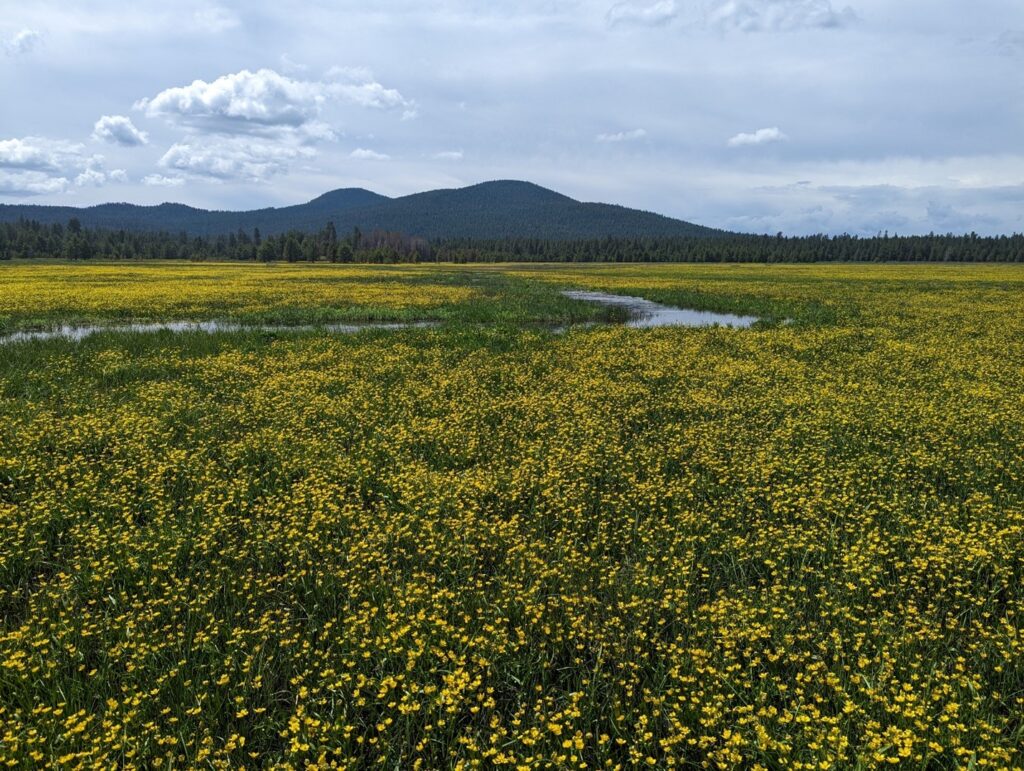A Programmatic Approach to Dam Removal and River Restoration: Cleveland National Forest, CA
When complete, the Trabuco District Dam Removal Project will result in the demolition of 81 dams that are no longer serving a purpose.

Removing one obsolete dam is an accomplishment. Removing more than 30 in one year is unheard of.
Yet, that’s exactly what Cleveland National Forest (CNF) did in 2018. They removed 33 dams, which accounted for more than 40% of all dam removals in the United States in 2018. These removals are part of a broader effort CNF is leading to restore migratory corridors for fish and other aquatic species known as the Trabuco District Dam Removal Project. When complete, it will result in the removal of 81 dams that are no longer serving a purpose. In 2018, California had the highest number of removals, surpassing Pennsylvania, the leading dam removal state for the past 15 years.
How did they do it?
The Forest’s success is largely due to their ambitious approach to National Environmental Policy Act (NEPA) compliance. The CNF identified dams and other instream barriers as inhibiting stream health, passage for aquatic species, and public safety hazards, and rather than expending resources thinking about each structure individually, they took a watershed-scale approach and evaluated the removal of all 81 dams within Silverado, Holy Jim, and San Juan Creeks within a single environmental assessment (EA).

Cleveland National Forest | Photo by US Forest Service
Dam removals that require a Clean Water Act Section 404 permit or are funded by federal dollars trigger one of three NEPA review processes that vary in review time, level of effort, and depth of analysis. Of the three, a Categorical Exclusion (CE) is the least rigorous, followed by an Environmental Assessment (EA). An Environmental Impact Statement (EIS), the most rigorous process, is generally required only for complex projects with potentially significant environmental impacts. As the level of analysis required by NEPA increases, so does the planning workload for federal staff and any consultants working on the project. This has ramifications on both the project timeline and budget.
Evaluating restoration and removal of the 81 dams in a single EA greatly reduced the time to complete NEPA and cost the Forest roughly $75,000. Additionally, having only one environmental assessment afforded the CNF flexibility in the timing and removal methods for individual dams.
The Trabuco District Dam Removal Project is well-suited for this programmatic approach given the size and proximity of targeted dams as well as their shared characteristics. The dams slated for removal were all small barriers concentrated on four nearby creeks within the Trabuco Ranger District. Nearly all were built or rebuilt by Orange County in the 1970’s to create pools for stocked rainbow trout, conserve water and wildlife, and provide water for fire suppression. This continuity made it easy to lump the dams into one cohesive project.
We also have a strong understanding of the anticipated benefits and impacts associated with dam removal as a river restoration tool. In areas where many small dams are scattered throughout a watershed, the full benefits of dam removal—improved fish passage, enhanced stream habitat, and restored natural stream processes— increase exponentially when project proponents can address multiple dams within the system. This makes the Cleveland National Forest’s approach necessary from a restoration standpoint and efficient from the permitting standpoint.
For other organizations looking to remove multiple dams, Kirsten Winter, the Forest Service biologist managing the project, recommends the programmatic approach for its efficiency and advises building in as much flexibility as possible regarding timing and removal methods. According to Winter, “This has been a great project and has built many partnerships for the Forest. There is a huge interest in dam removal and many partners are willing to fund this type of work for mitigation or just for habitat improvement.”
What’s next?
New approaches to permitting have the potential to speed the pace of dam removal on federal lands. A 2014 amendment to the Forest Service NEPA regulations added three new categorical exclusions, including modifications to water control structures, which includes dam removals. The new rule, which allows National Forests seeking to remove a dam to complete a Categorical Exclusion rather than a more arduous EA or EIS, increases the efficiency of dam removal projects while still maintaining public involvement and environmental protection.

Cleveland National Forest | Photo by USFWS
The Pacific Northwest Region (Region 6) of the U.S. Forest Service is also looking to increase the pace of aquatic restoration by taking an analogous, but slightly different approach to that used by the Cleveland National Forest. They are evaluating a region-wide environmental assessment on Forest Service land in the Pacific Northwest covering a suite of aquatic restoration techniques, including dam removal, rather than addressing specific projects. The premise for this, much like in the CNF, is that the restoration activities selected are ones in which the impacts and benefits of said projects are a known entity and can be predicted.
Hopefully, these alternate paths, along with the “many dams, one NEPA” strategy employed by the Cleveland National Forest will lead to more dam removals on federal land and improve the health of rivers nationwide.
For more information about the Trabuco District Dam Removal Project, contact Kristen Winter, Cleveland National Forest, 858-674-2956, kwinter@fs.fed.us



4 responses to “A Programmatic Approach to Dam Removal and River Restoration: Cleveland National Forest, CA”
In the winter and spring of 2017 and 2018, the US Forest Service (USFS) and the Marines from Camp Pendleton, under the direction of Biologist Kirsten Winter and Forest Supervisor William Metz, contradicted environmental review documents and used explosives to remove historic stone dams from Silverado and Holy Jim Creeks within the TRD of the CNF. These dams were originally developed in the the 1930s and early 1940s for recreational purposes, including fishing and swimming. The USFS regarded the dams as public health hazards and obstructions to the movement of steelhead trout. Actually, the modestly built stone dams, which featured large central gaps to allow for unobstructed creek flow, were appreciated by forest users and canyon residents as seasonal swimming attractions, wildlife viewing areas and culturally historic artifacts. Sensitive wildlife, including newts, frogs, toads and western pond turtles, were regularly observed at each dam location. As the stone and mortar dams gradually eroded away over the past 80 years, the creeks were able to naturally restore themselves. Eventually the dams would cease to exist without any human intervention. However, the USFS reacted as if there was an urgency to remove the dams even though steelhead were unable to travel up the creeks from the ocean because of countless urban and natural obstacles both upstream and down, including roads, reservoirs, drops, habitat loss, etc. The removal project was at least partially funded by the County of Orange. The USFS recruited the Marines to demolish some of the dams in Silverado Creek and Holy Jim Creek with explosives, including C4, during peak stream flow and breeding season for state and federally protected wildlife species, including arroyo toad, CA newt, western pond turtle, least Bell’s vireo and southwestern willow flycatcher. According to the USFS Environmental Assessment (EA) and Finding of No Significant Impact (FONSI) documents, no work was to be done during peak flow or breeding season. Work was supposed to be done in the fall when the creek was dry. Contrary to the EA, FONSI and repeated requests from members of the public, including canyon residents and forest users, the USFS decided to use explosives in the wrong season, which was more destructive than any other method outlined in the EA. The public contacted the Regional Water Quality Control Board because of concerns about the USFS determination to use explosives during the wrong season, which threatened protected species, public recreation and water quality. The public also contacted Congresswoman Mimi Walters and was able to get a letter sent to the USFS requesting the discontinuation of the use of explosives, a meeting with the community and an exploration of ecologically sensitive removal methods. Unfortunately, the USFWS signed off on the schedule change from fall, when the creek was dry, to winter/spring, when the creek was flowing and sensitive wildlife species were breeding in the creeks. As a trained botanist (not a habitat restoration specialist or herpetologist), Kirsten Winter, the project leader, was unqualified to coordinate a riparian habitat restoration project with the potential to harm state and federally protected species. The USFS and USFWS ignored the concerns and outrage expressed by the public and continued to work with the Marines to demolish the dams with explosives as a series of military training exercises. This destructive project also contradicted the substantial local research that was conducted by USGS. The forest was closed to the public during the blasting. The creek was polluted with debris, shrapnel and residue from the explosives. The riparian plant community was destroyed. Rock pools that supported frogs, pond turtles, newts and toads were filled in with sediment, mortar and rock material. The excessive use of explosives degraded the wildlife habitat during peak breeding season and created public health hazards to forest users during peak recreational season. The forest users and canyon residents were devastated.
Were any of the removed dams ranch storage ponds? I’ve come to believe up to a certain size and decent permeability ranch ponds are generally positive for aquifers and wildlife.
River restoration may well be the single best remedy for managing wildfires. As hydrologic flows are restored, drought-stricken landscapes will also be restored by the return of historic drainage systems. Need a lot of studies to compare baseline drought conditions to restored drainage conditions.
The USFS CE approach is a good one. Note, NOAA also lessens NEPA burden by using its PEIS to address proactive dam removals and other types of restoration.